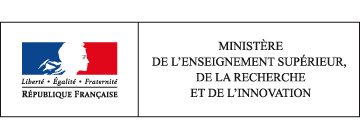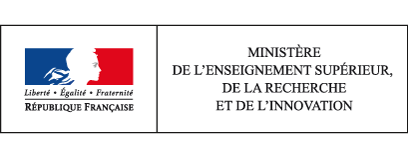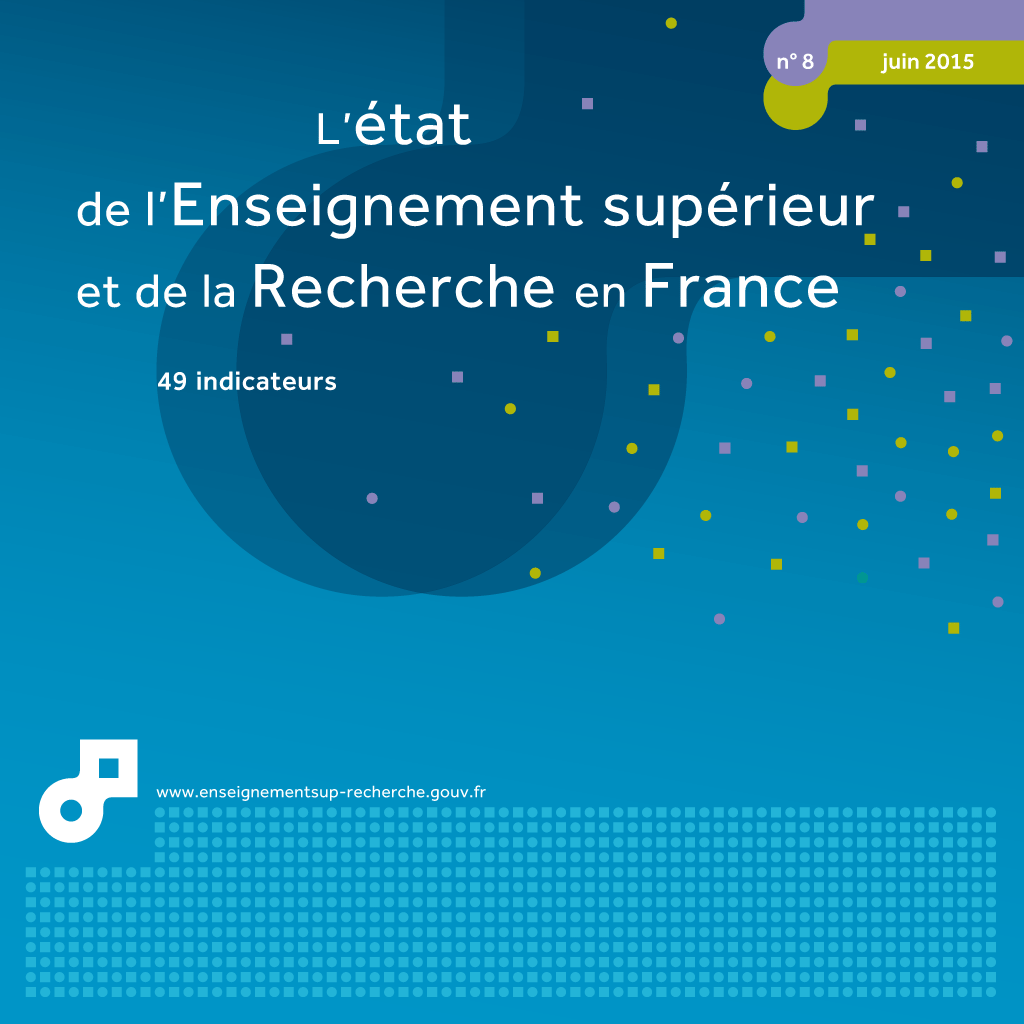29 R&D expenditure by France's main public research institutions
This page has been updated. Read 29. R&D expenditure by France's main public research institutions in Higher education & research in France, facts and figures 10th edition - June 2017
In 2012, the gross domestic expenditure on R&D (GERD) of France's main public research institutions amounted to €9.1 billion, a fall of 1.1% in relation to 2011. These institutions carry out 55% of public research and are key stakeholders in research and development in France. The French National Centre for Scientific Research (CNRS) and the civil division of the French Alternative Energies and Atomic Energy Commission (CEA) conduct a third of public research, with GERD of €5.5 billion.
Eight State-owned scientific and technological establishments (Établissements publics à caractère scientifique et technologique – EPST) and a dozen State-owned industrial and commercial establishments (Établissements publics à caractère industriel et commercial – EPIC) make up France's main research institutions. They are supervised by one or more government ministries and have a public service remit. Their primary objective is to carry out research, particularly in fields or to achieve aims agreed in long-term target and performance contracts signed with the French government. They conduct more than half of public research and nearly a fifth of all research carried out within France (by both government bodies and enterprises) and as such are key stakeholders in the country's research and development sector. In 2012, these key public institutions invested €9.1 billion on GERD, equivalent to 55% of public research, with EPSTs accounting for 32% and EPICs 23% (table 29.01). Their R&D expenditure fell by 1.1% in relation to 2011 as a result of lower investment by EPICs.
The CNRS and the CEA are France's two largest research institutions. In 2012, they were responsible for 33% of all public research between them (19% for the CNRS and 14% for the civil division of the CEA). France's other research institutions are smaller in size: the French National Institute for Agricultural Research (Institut national de la recherche agronomique – INRA) and the French National Institute of Health and Medical Research (Institut national de la santé et de la recherche médicale – INSERM) each account for 5% of public research, while the French Government Space Agency (Centre national d’études spatiales – CNES) is responsible for 3%. The remaining public research institutions each account for 2% or less of research in France.
Some institutions focus primarily on fundamental research (chart 29.02). In 2012, this kind of research accounted for 89% of CNRS R&D expenditure and all R&D spending by the French Institute for Demographic Studies (Institut national d’études démographiques – INED) and the French Polar Institute (Institut polaire français Paul Émile Victor – IPEV). Other institutions are more focused on applied research, such as the civil division of the CEA (81% of its GERD), the French Government Geological Survey (Bureau de recherches géologiques et minières – BRGM), the Scientific and Technical Centre for Building Trades (Centre scientifique et technique du bâtiment – CSTB) and the National Competence Centre for Industrial Safety and Environmental Protection (Institut national de l’environnement industriel et des risques – INERIS).
Public institutions do not always fund all of their research work using domestic expenditure; they sometimes enter into partnerships or subcontracting arrangements with external organisations, such as enterprises, foreign governments, international organisations and foreign teams. In 2012, their R&D extramural expenditure was €0.7 billion. EPSTs make little use of such partnerships or subcontracting arrangements (chart 29.03). Overall, 6% (€0.3 billion) of their research work was carried out externally. Among these EPSTs, the Institute of Research for Development (Institut de recherche pour le développement – IRD) is unusual in that a significant proportion of its work is done in external partnerships, often via its worldwide network of offices.
On average, 8% of the research work done by EPICs in 2012 was funded by extramural expenditure. Although the French national public expert in nuclear and radiological risks (Institut de radioprotection et de sûreté nucléaire – IRSN) continued to subcontract nearly a third of its research work, almost all of the work done by the BRGM, the civil division of the CEA, the French Research Institute for the Exploitation of the Sea (Institut français de recherche pour l’exploitation de la mer – IFREMER), the National Metrology and Test Laboratory (Laboratoire national de métrologie et d'essais – LNE) and the French National Aerospace Research Centre (Office national d’études et de recherches aérospatiales – ONERA) was funded by intramural expenditure, with less than 5% of their research conducted externally.
The proportion of research work carried out by EPSTs in collaboration with foreign governments increased overall in comparison with 2011. The IRD is once again an exception to the rule in that it invests 98.5% of its DERD abroad (chart 29.04). With regard to EPICs, while the IRSN and ONERA primarily entered into partnerships with public sector bodies, the IFREMER relied on businesses and the French Agricultural Research and International Cooperation Organisation (Centre de coopération internationale en recherche agronomique pour le développement – CIRAD) looked abroad, working with international organisations.
MENESR-DGESIP/DGRI-SIES.
How to cite this paper :
close
Key figures
Whole of France
Whole of France
Whole of France
Whole of France
Whole of France
Whole of France
Whole of France
Whole of France
Whole of France
Whole of France
Whole of France
Whole of France
Whole of France
Whole of France
29.01 Amount and breakdown of gross domestic expenditure on R&D (GERD) by French government bodies in 2012 (in €bn and as a %)
You can embed this table to your website or your blog by copying the HTML code and pasting it into the source code of your website / blog:
close
29.02 Breakdown of GERD by France's main public institutions in 2012 by type of research (as a % and in €M) 1
1 Main public institutions in terms of GERD - excluding the CNES, INRA and IRD (breakdown data not available).
You can embed this chart to your website or your blog by copying the HTML code and pasting it into the source code of your website / blog:
close
29.03 Proportion of R&D extramural expenditure (DERD) by France's main public institutions in 2012, in relation to their total R&D expenditure (GERD+DERD) (as a %) 1
1 Main public institutions in terms of GERD.
You can embed this chart to your website or your blog by copying the HTML code and pasting it into the source code of your website / blog:
close
29.04 Breakdown of R&D extramural expenditure (DERD) by France's main public institutions in 2012 by institutional sector (as a % and €M) 1
1 Main public institutions in terms of GERD, excluding the CEA (data not available).
You can embed this chart to your website or your blog by copying the HTML code and pasting it into the source code of your website / blog:
close
Related statistical publications

 Note d'information SIES 14.07 - Research and development expenditure in France in 2012 - Christophe Dixte, Anna Testas - August 2014
Note d'information SIES 14.07 - Research and development expenditure in France in 2012 - Christophe Dixte, Anna Testas - August 2014 The rise in GERD was the result of a steady increase in business R&D expenditure, with government expenditure remaining stable. The country's research effort, measured as a ratio of GERD to gross domestic product (GDP), was 2.23% in 2012. It is likely to remain stable at 2.23% in 2013.
Due to a slowdown in business R&D expenditure, GERD is in fact likely to increase by 0.5% in volume in 2013 (provisional results), a rate that is only slightly higher than that of GDP.
In 2012, R&D activities in business enterprises and in government mobilised 412,000 full-time equivalent staff.

 Note d'information SIES 13.06 - Research and development expenditure in France in 2011 - First estimates for 2012 - Caroline Iannone, Nicolas Le Ru - July 2013
Note d'information SIES 13.06 - Research and development expenditure in France in 2011 - First estimates for 2012 - Caroline Iannone, Nicolas Le Ru - July 2013 Translation
 Etat de l'enseignement supérieur et de la rechercheL'état de l'Enseignement supérieur et de la Recherche en France n°8 - juin 2015
Etat de l'enseignement supérieur et de la rechercheL'état de l'Enseignement supérieur et de la Recherche en France n°8 - juin 201529 - les dépenses de recherche des principaux organismes publics - Christophe Dixte






